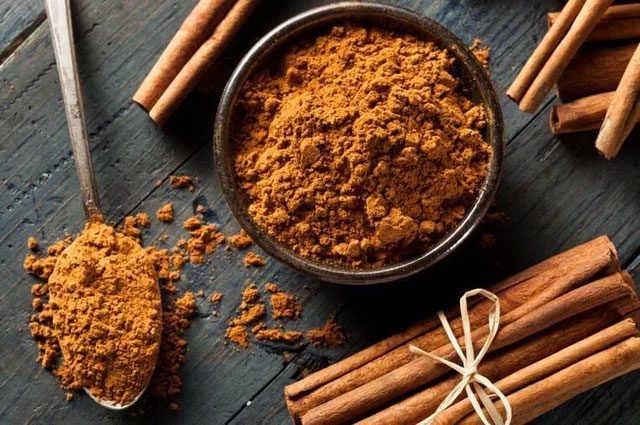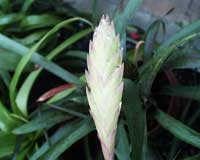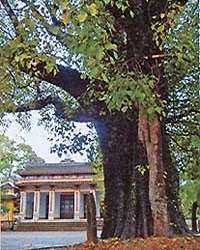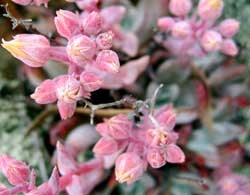The products of Vietnam are considered to be of the highest quality in the world and have the effect of “staying young forever.”
Chinese Cinnamon Lags Behind Vietnamese Cinnamon
The first story recounts that the Annals of the Joseon Dynasty in Korea noted that Korea often purchased herbal fragrances from An Nam (the former name of Vietnam) through China. Due to a lack of physicians and medicinal herbs, Korea had a practice since the Song Dynasty of inviting doctors and importing medicine from China. The Ming and Qing dynasties were no exception. The Korean envoy, tasked with recording the itinerary and events of the delegation, discussed with Chinese officials about the origins of herbs such as cinnamon, patchouli, and white ant wings, ultimately agreeing that An Nam produced the best quality.
The envoy stated: “The medicinal herbs of our small state depend on the great country. Each year, after negotiating prices, we purchase according to the needs of our domestic hospitals. Especially for the two types, cinnamon and patchouli, shops sell them, but they are not of good quality. Both of these grow in the South, with Giao Chi cinnamon being the best and An Nam patchouli being number one (referring to Vietnam). Is that correct?”
A Chinese official responded: “Cinnamon grows in Giao Chi, and white ant wings are produced in An Nam. These two species are the best. The Compendium of Materia Medica states: ‘Cinnamon ignites and returns to its original flavor, sweet and fragrant.’ Currently, the Tuần Châu region in Guangxi has many varieties, but they are spicy and far inferior to Giao Chi…”

Thanh Hóa cinnamon is highly regarded worldwide. (Photo: Getty).
The second story mentions that the Complete History of Đại Việt recorded that in April of the Year of the Rooster (1789), Ngô Thì Nhậm led a delegation of Tây Sơn envoys to Guangxi, where the Qing official Thang Hùng Nghiệp returned gifts that King Quang Trung had previously presented to him but demanded that when officially presenting tribute, four or two elephants and Thanh Hóa cinnamon must be sent to the Qing court. Regarding cinnamon, Thang clearly stated that the cinnamon offered must be large and thick from Thanh Hóa.
“The Gold of the East”
Cinnamon is obtained from the bark of certain plants belonging to the genus Cinnamomum, a member of the Lauraceae family, characterized by its spicy flavor and fragrant aroma, used as a medicinal remedy and a spice in food preparation.
It is harvested by rolling it into strips and drying it; the closer the layer is to the center of the trunk, the better the quality of the cinnamon.
Cinnamon, ginseng, and deer antler are the top three precious medicinal ingredients for health, highly valued in traditional Chinese medicine since ancient times. The imperial physicians of the Qing dynasty used cinnamon as a tribute to prepare recipes for Emperor Qianlong and Empress Dowager Cixi, weaving tales of health and longevity. Over 2000 years of imperial application has proven that long-term use of cinnamon can nourish the kidneys, enhance energy, dispel wind and cold, nourish the brain, and soothe the mind, making it a treasure used by the aristocracy for health maintenance.
Cinnamon primarily thrives in humid tropical regions such as southern China, Laos, Indonesia, and Vietnam. In Vietnam, Thanh cinnamon (a shorthand for Thanh Hóa cinnamon) is the most renowned.
According to the Vietnamese Dictionary, Thanh cinnamon can grow 10 – 20 meters tall, with young branches having four edges, flat and smooth. The leaves are long, narrow oval-shaped with two pointed ends, featuring three veins running from the petiole to the leaf tip, and the undersides have small scales, with leaf blades measuring 12 – 15 cm long and 5 cm wide. The flowers are white, growing in panicles at the ends of branches or leaf axils. The fruit is egg-shaped, about 1 cm long, green when immature, and brownish-purple when ripe, with hairs at the stem end close to the base. Thanh cinnamon grows in forests in Trịnh Vạn (located in Thường Xuân District, Thanh Hóa) and is considered the best type. Additionally, it is cultivated, thriving well in Lào Cai, Yên Bái, Quảng Ninh, Nghệ An, Hà Tĩnh, and more. It can be propagated by seed, branch cuttings, or transplanting young plants from the forest. The bark can be harvested after five years, but the longer it is left (10 – 30 years or more), the better it becomes. The bark is harvested in April – May and September – October.
In the United States, Thanh cinnamon is valued more highly than Chinese, Indonesian, or Sri Lankan cinnamon.
According to the Science of Chinese Herbal Processing (edited by Trương Hiền Triết and Thái Quế Hoa), Thanh Hóa cinnamon has a high aromatic oil content, does not become concentrated over time, and has a fine, jade-like texture, earning it the name “Thanh Hóa jade cinnamon,” classified as a superior grade among all types of cinnamon.
| In China, cinnamon is both a spice and a good medicinal herb, referred to as i. Since the Western Zhou period, it has been regarded as a precious medicine. The Shennong Bencao Jing describes: “Cinnamon can cure a hundred diseases…, prolonged use can open meridians, and the body will stay young forever.” In ancient China, even the salaries of the common people were paid in a fixed amount of cinnamon, and it was often used to pay rent. |




















































